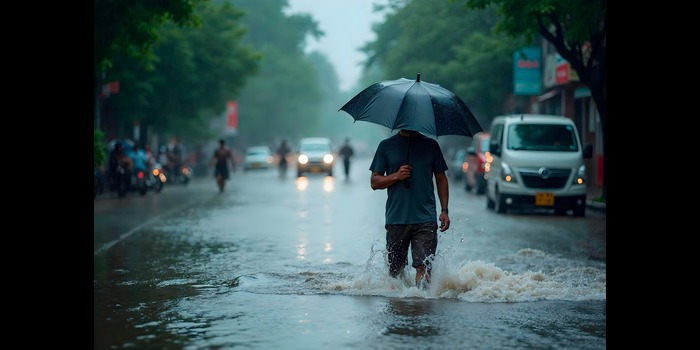Chandigarh Schools Shut as Rains Flood City
Share

September 2, 2025, Chandigarh All schools in Chandigarh were shuttered on Tuesday as continuous heavy rain caused extensive flooding and safety concerns over the city. Given the worsening weather, the Union Territory government determined to protect kids. Teachers were directed to report to schools to help with non-academic activities, especially those requiring supervision, coordination, and safety, even when educational activities were suspended.
Over the last two days in many areas of Chandigarh, it has been pouring constantly for over 100 mm. Known as choes, the seasonal streams running through Chandigarh have flooded and blocked major roadways, thereby upsetting daily life. Exceeding its capacity during the monsoon season, the Patiala Ki Rao frequently used to convey storm water flooded low-lying regions like the Sukhna Choe, N-Choe, and throughout the monsoon season, when people fought with the increasing water. Because bridges and underpasses in areas such as the Industrial Area and Sector 11/15 were not accessible, traffic congestion exacerbated problems.
Though municipal corporation employees have been working nonstop to get rid of standing water, the ongoing rain has made the work even more difficult. The police have been under pressure to redirect traffic and post additional officers to counsel individuals against driving unless it is quite essential in the hardest-hit areas. The degree of disturbance became clear when the rain caused a farmer’s Lalru mud hut to fall, killing him, and underlined the risks connected by using this material in building. Exposures of those who are at risk come from such conditions. Another episode saw a tree fall on a parked car in Manimajra, however no one died. Overflowing streams separated several settlements close to Mohali, leaving stranded individuals and damaged essential infrastructure. Following some harm to retaining walls, the regions around the Chandigarh Railway Station underwent brief closures.
Academic activity as well as college life have been affected by the torrential rains. Several institutions were required to abandon or postpone scheduled campaign events in the days leading up to the student union elections. Government College for Girls promoted its programs only in the classroom; MCM DAV College for Women called off all outside events instead. Under the tight discipline at Sri Guru Gobind Singh College, only little groups were allowed to wander about. At GGDSD College, banners and posters were banned, hence there was a low-key campaign atmosphere. But some colleges, such DAV College in Sector 10, spotted a few small groupings of dedicated students who kept giving manifestos despite the rain. The weather thus reduced the vivacious, high-energy period students usually anticipate.
Outside of Himachal Pradesh, Haryana, and Punjab’s city boundaries, the rain’s effects have been felt. More than a thousand villages in Punjab have suffered considerable damage to farmland and agriculture as a result of extensive flooding. Millions of hectares of agricultural land are currently inundated, which is causing financial problems for farmers as a result of debt and low output. The state government has postponed the closure of schools and universities until September 3, and private institutions have been advised against violating safety guidelines. The Panchkula area has also been greatly affected by the rain, which has caused highway cave-ins and knee-deep flooding in homes.
The government is tackling the damage multifaceted in Chandigarh. Health authorities are inspecting standing water for possible mosquito breeding, municipal crews are clearing gutters, and emergency teams are poised to avoid further chokes. Parents who say that safety should come before daily scholastic schedules have backed school closures. Residents have been also told to stay indoors.
Once more, the continuous rain has brought to light the city’s woefully insufficient flood and drainage system. Though occasionally referred to as a planned city, Chandigarh has repeatedly dealt with waterlogging issues during heavy monsoon rains. Specialists believe the city is currently less susceptible to extreme weather because of urban expansion and infiltration of natural drainage networks. The need of finding long-term answers is brought into sharp relief by the present problem as climate patterns grow increasingly unpredictable.
For now, Chandigarh waits cautiously for the rains to ease. The administration is focused on ensuring that no lives are put at further risk, schools remain secure, and essential services continue functioning. As the city wades through flooded streets and disrupted routines, its residents display the familiar resilience of a community accustomed to monsoon hardships. Yet, the events of the past days are also a sobering reminder of how vulnerable even well-planned cities can be when nature unleashes its fury.








